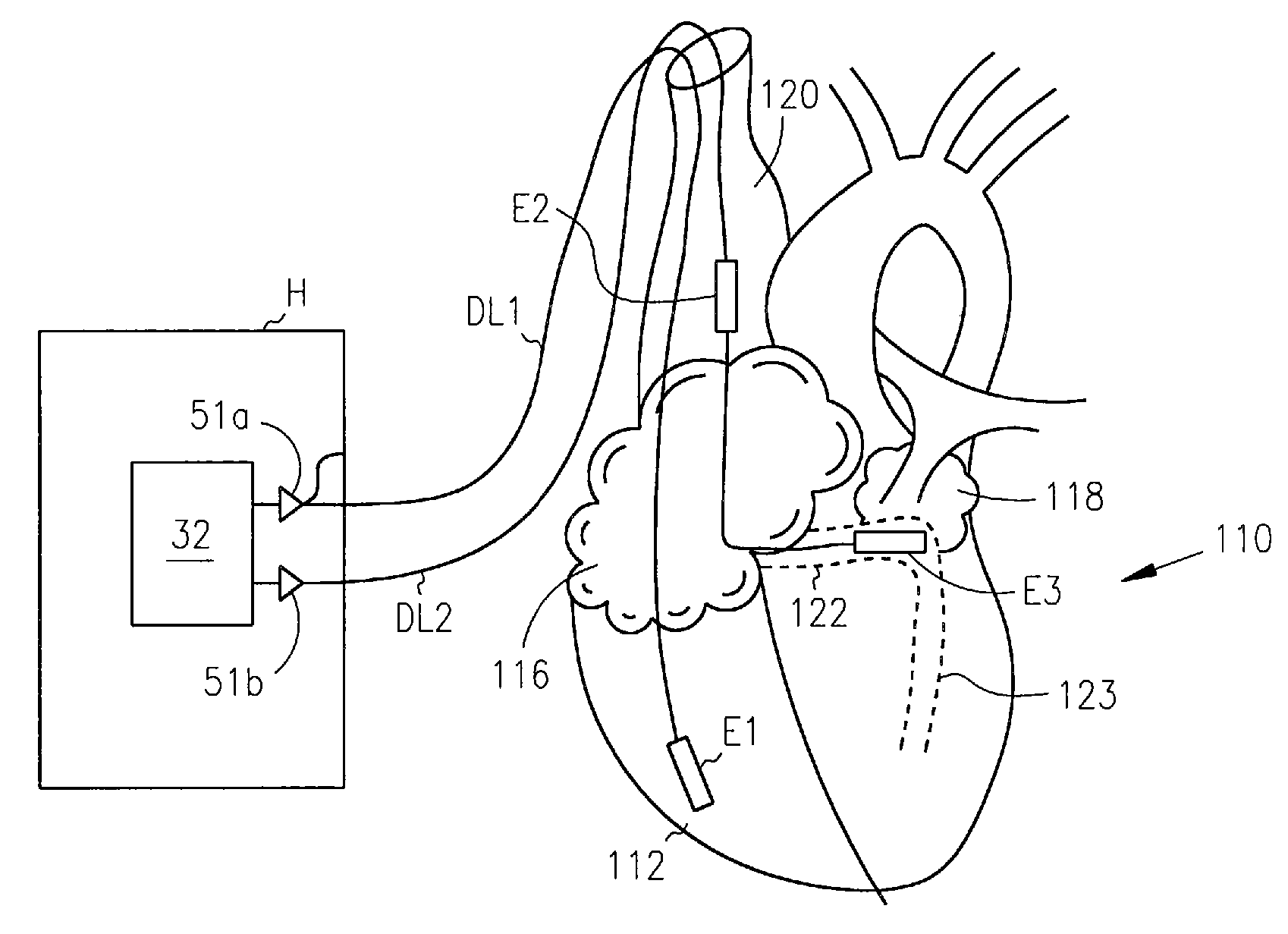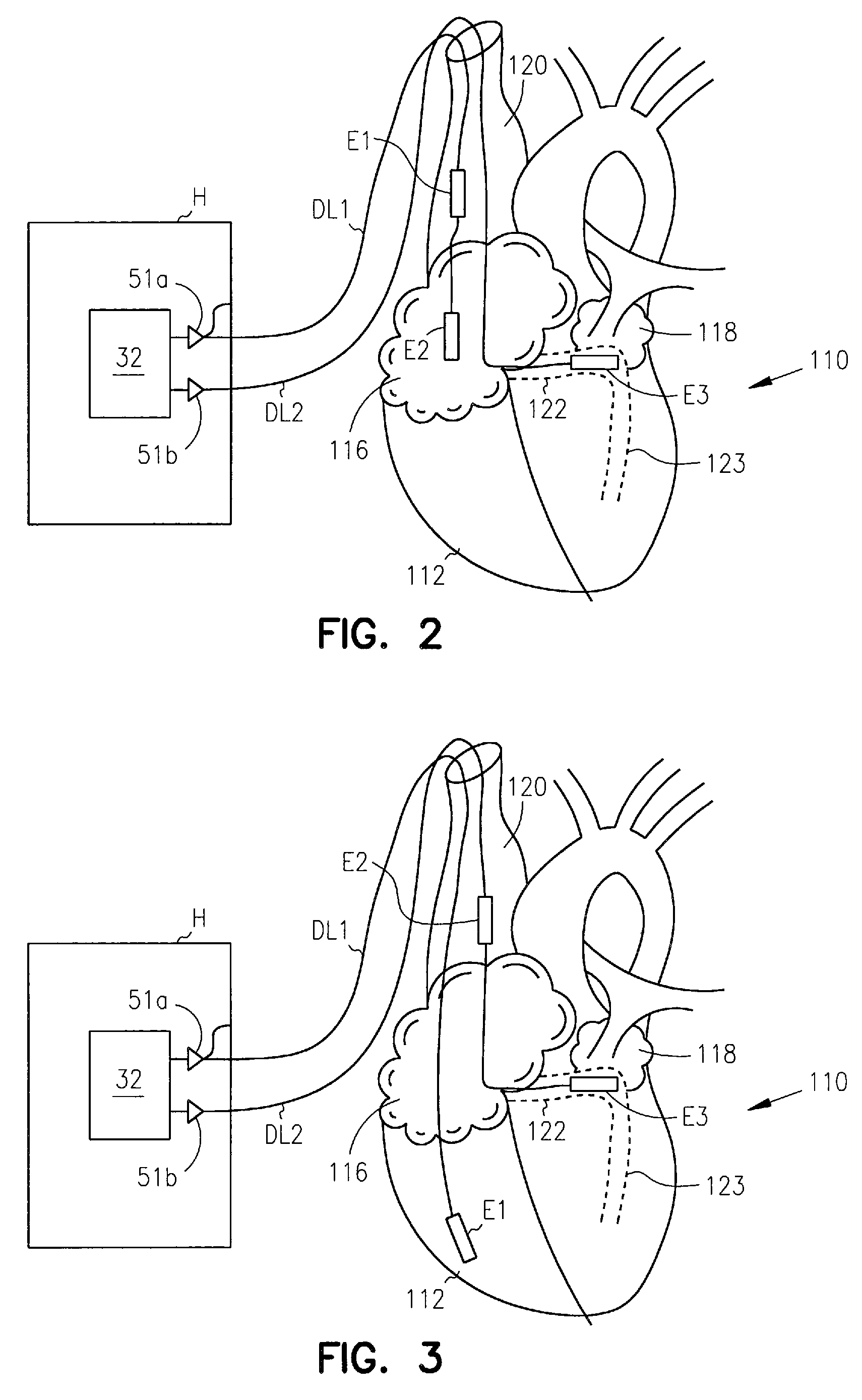Method and apparatus for termination of cardiac tachyarrhythmias
- Summary
- Abstract
- Description
- Claims
- Application Information
AI Technical Summary
Problems solved by technology
Method used
Image
Examples
Embodiment Construction
[0013] In the description of particular embodiments that follows, a microprocessor-based ICD will be referred to as incorporating the system and method that is the present invention where programmed instructions in memory are executed by a microprocessor. It should be appreciated, however, that certain functions of an ICD can be controlled by custom logic circuitry either in addition to or instead of a programmed microprocessor. The term “circuitry” as used herein should therefore be taken to mean either custom circuitry (i.e., dedicated hardware) or a microprocessor executing programmed instructions contained in a processor-readable storage medium along with associated circuit elements.
[0014]FIG. 1 is a system diagram of a microprocessor-based implantable cardioverter / defibrillator with the capability of also delivering pacing therapy. A microprocessor 10 communicates with a memory 12 via a bidirectional data bus. The memory 12 typically comprises a ROM for program storage and a R...
PUM
 Login to View More
Login to View More Abstract
Description
Claims
Application Information
 Login to View More
Login to View More - R&D Engineer
- R&D Manager
- IP Professional
- Industry Leading Data Capabilities
- Powerful AI technology
- Patent DNA Extraction
Browse by: Latest US Patents, China's latest patents, Technical Efficacy Thesaurus, Application Domain, Technology Topic, Popular Technical Reports.
© 2024 PatSnap. All rights reserved.Legal|Privacy policy|Modern Slavery Act Transparency Statement|Sitemap|About US| Contact US: help@patsnap.com










